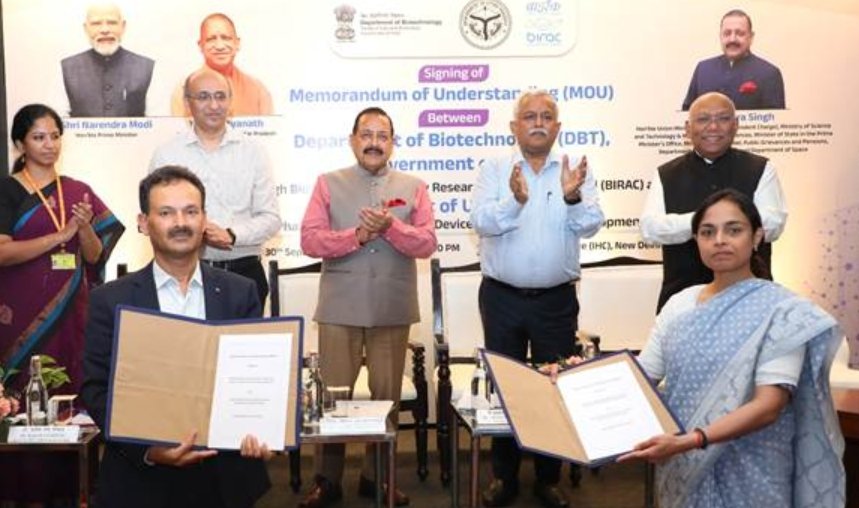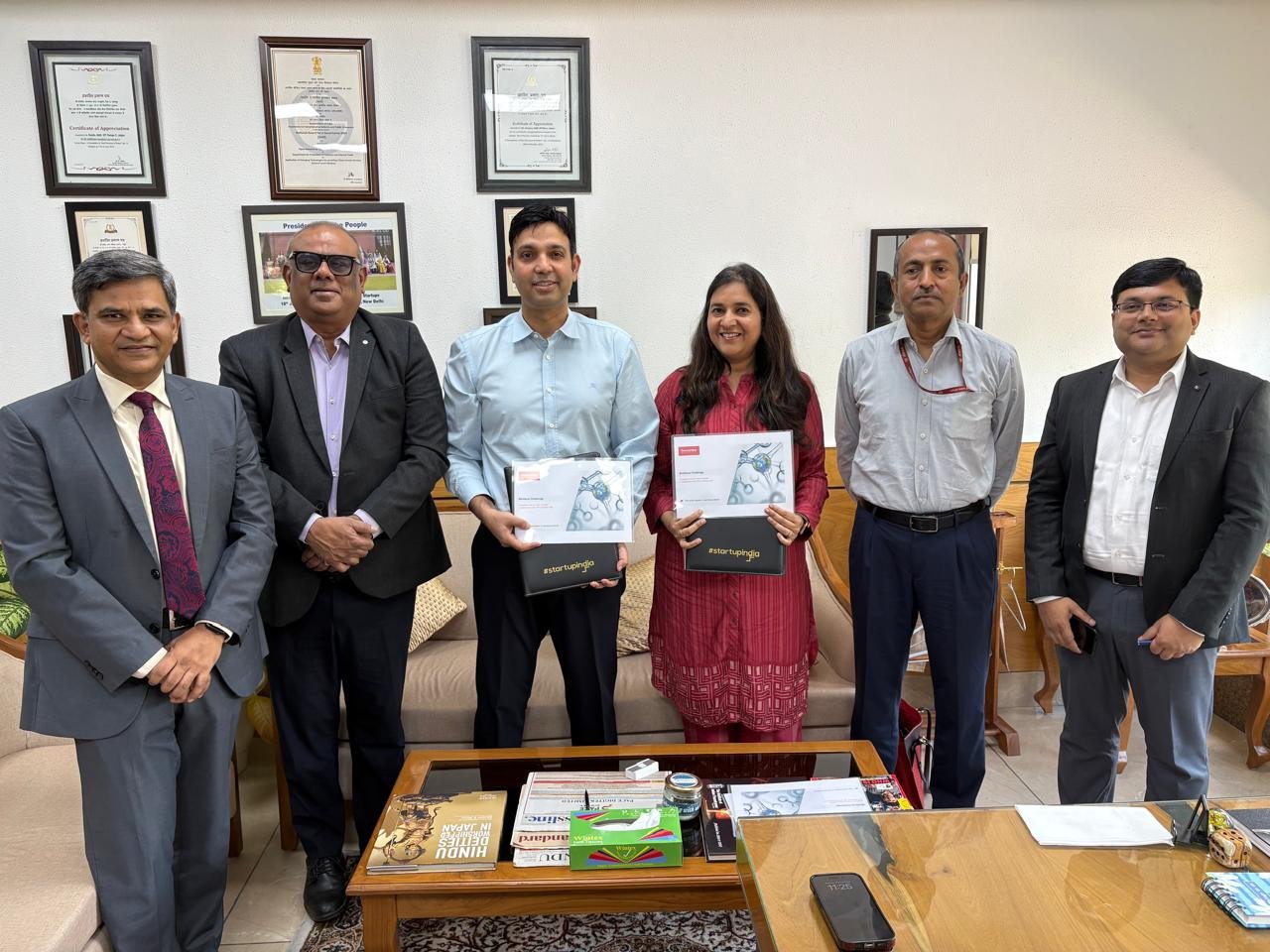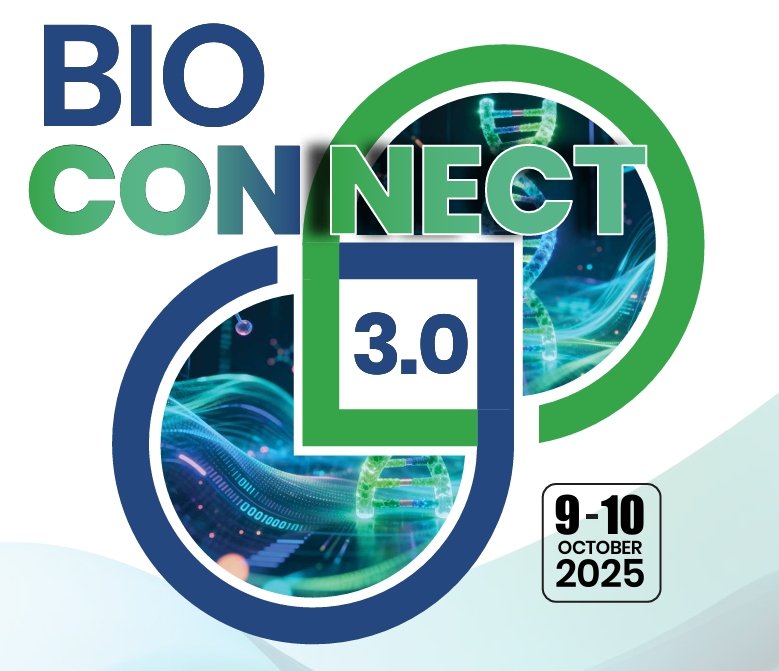Smiles with cry1C gene
July 08, 2009 | Wednesday | News
Smiles
with cry1C gene

Even as a cloud of uncertainty has gathered over
the moves to approve the country’s first GM food crop, Bt
brinjal, India’s biotech regulator has given the industry a
big reason to cheer. The Genetic Engineering Approval Committee (GEAC)
has given its approval to a new “genetic event
9124” to use the novel synthetic gene, cry1C, in two Bt
cotton hybrids (MH 5125 and MH 5174) developed by Bangalore-based
Metahelix Life Sciences.
From the time India’s first Bt cotton hybrids containing
cry1AC genes, developed by global seed giant, Monsanto were introduced
in 2002, experts have been stressing the need to have home-made genes.
Now an Indian company, started by homegrown experts, has demonstrated
the capability to develop a newer version of the gene, without help
from any public or private laboratory. In fact, the new hybrids from
Metahelix will match the 2nd generation Bt cotton hybrids released by
Monsanto incorporating its proprietary cry2AC genes. The new gene-based
hybrids will protect the crops against its two major
pests—bolloworm and spodoptera—with a single gene.
This outstanding achievement by the Metahelix team, led by KK
Narayanan, is significant for two reasons. One, the cry1C gene will
become an alternate technology platform to Monsanto’s and
other seed giants’ cry1AC based crop protection system. The
cry1AC gene has been in use for over a decade around the world and
there is every possibility of the major cotton pest, bollworm, mutating
to develop resistance to this gene. The world will have an alternate
option should that happen soon.
Second, a lot of opposition to the GM technology in India, to a large
extent, was also based on the fact that the royalty or technology fee
on the Bt cotton seeds went to a multinational giant. With the
home-grown Metahelix in a position to transfer this technology at
affordable rates to Indian seed companies, the future GM products in
India could run less risk of opposition from a wide range of anti-GM
activists.
Metahelix, angel funded by Nadathur Holdings of one of the co-founders
of Infosys, NS Raghavan, and supported by Kotak Mahindra Private Equity
Fund, has managed to get commercial approval for the cry1C gene with an
investment of just Rs 50 crore. Hence, it will be in a position to
rewrite the rules of the game, if it plays its cards right. Metahelix
could well turn out to be the “game changer” for
India’s BioAgri industry, in the same manner in which Shantha
Biotech’s Varaprasad Reddy, influenced the course of the
country’s fledgling biotech sector with his home-made
Hepatitis B vaccine in the late 1990s.
The baton of ministerial leadership in the science and technology
ministry has meanwhile been handed over to Prithviraj Chavan from Kapil
Sibal. A foreign-educated engineer by profession, Chavan has already
had a round of discussion at a closed-door session with industry
leaders in Bangalore in mid-June. The industry has given him the wish
list and also pleaded for increasing access to the fruits of biotech
efforts to Indian citizens. The government which swears by the aam admi
(common man) hopefully will listen to the industry’s
suggestion. Chavan continues to wear his other hat as the minister in
the Prime Minister’s Office (PMO) and hence will have
additional influence over policy making in the current government.
The July issue has the second part of the 7th BioSpectrum-ABLE Biotech
Industry Survey, focusing this time on BioSuppliers, the key companies
that keep the biotech research going with their invaluable equipment,
material and service support. There is some churn at the top with
Waters emerging as the No.1 BioSupplier in 2008-09. The segment growth
also mirrors the figures of the biotech industry closely.
The ranking table too has undergone some major changes due to
more systematic data capture this year to reflect more accurately the
business done by these companies with the life sciences
institutions. Some of the industry leaders opted out of this
year’s survey due to decline in sales numbers induced by the
recessionary market conditions. The biotech industry continues to look
forward to this exercise in benchmarking the critical enablers of the
life sciences ecosystem. Hopefully, things will be back to normal by
the time the next survey is done in June 2010.
<sureshn@cybermedia.co.in>


 Even as a cloud of uncertainty has gathered over
the moves to approve the country’s first GM food crop, Bt
brinjal, India’s biotech regulator has given the industry a
big reason to cheer. The Genetic Engineering Approval Committee (GEAC)
has given its approval to a new “genetic event
9124” to use the novel synthetic gene, cry1C, in two Bt
cotton hybrids (MH 5125 and MH 5174) developed by Bangalore-based
Metahelix Life Sciences.
Even as a cloud of uncertainty has gathered over
the moves to approve the country’s first GM food crop, Bt
brinjal, India’s biotech regulator has given the industry a
big reason to cheer. The Genetic Engineering Approval Committee (GEAC)
has given its approval to a new “genetic event
9124” to use the novel synthetic gene, cry1C, in two Bt
cotton hybrids (MH 5125 and MH 5174) developed by Bangalore-based
Metahelix Life Sciences. 






